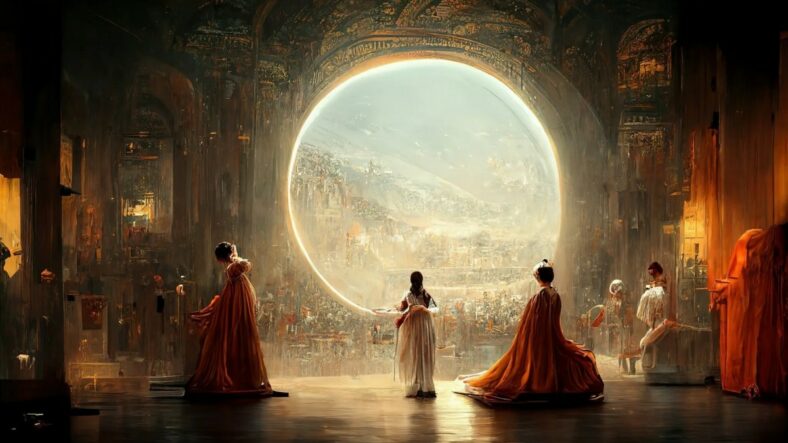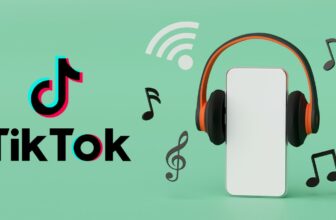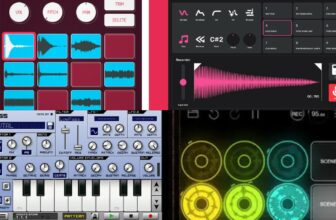Can You Use Midjourney for Album Art?

You can use Midjourney to create album art without copyright issues. If you own a Midjourney subscription plan, you have the right to use the created images for commercial purposes, but certain considerations apply. This is a fast-changing field and laws may differ across countries.
This question has been on the minds of many musicians and artists looking to explore new avenues for their creative expression.
Please note: This is not legal advice. If in doubt, consult with a lawyer. Also, keep in mind that this is a rapidly evolving field, so both laws as well as Midjourney’s terms and conditions may change.
Contents
Midjourney for Album Art – At a Glance
- Midjourney can be used for album art creation without copyright issues, but certain considerations apply.
- Paid Midjourney subscribers have commercial usage rights for images created.
- Free users do not have commercial usage rights.
- Ownership and usage rights of images created on Midjourney are subject to specific terms and conditions.
- A recent U.S. Copyright Office ruling states that AI-created images may not receive copyright protection.
- Caution is needed to avoid unintentionally creating art that resembles existing works or brands.
- Copyright issues can arise, so users should be mindful of copyright laws and obtain necessary permissions.
- Midjourney can be a valuable tool for artists but must be used responsibly and ethically to respect copyright boundaries.
Here’s an example of album art being created with Midjourney:
Can You Use Midjourney Images Commercially?
Being a paid member of Midjourney comes with a spectrum of rights and responsibilities. These privileges, however, do not extend to individuals who are not paid members, including those on a trial basis.
Below is a concise overview of the principal guidelines and nuances applied to paid subscribers:
Ownership and Usage Rights: You possess a degree of ownership over the assets you create using Midjourney. Nevertheless, it is essential to note that these assets remain subject to use and modification by other members of the Midjourney community. Additionally, Midjourney retains perpetual, non-exclusive, and global rights, along with the authority to sublicense, reproduce, and craft derivative works.
Exclusive Ownership and Endorsement: While you do maintain rights to the images you produce, it is imperative that you refrain from asserting exclusive ownership or authorship over these images or implying any endorsement by Midjourney.
Commercial Usage Rights: As a paid subscriber, you are granted the privilege to employ the images generated through Midjourney for commercial purposes.
Compliance and Legality: Your utilization of both the images and the platform must adhere strictly to principles of legality, refraining from any activities that could be classified as unlawful, defamatory, obscene, harmful, or infringing upon the rights of others. This stipulation applies regardless of the purpose or context of usage.
Non-Interference: It is imperative that you abstain from any use of the images or the platform that may jeopardize or disrupt the services, systems, or networks of Midjourney.
While free users do not enjoy commercial usage rights, this privilege is extended to paid subscribers. However, it is of paramount importance to exercise utmost caution by adhering diligently to the terms and conditions of licensing, thereby avoiding potential legal consequences.
It is crucial to underscore that the linchpin for optimizing the benefits of Midjourney while avoiding legal entanglements lies in the comprehension and adherence to the platform’s terms and conditions.
Should you desire a more in-depth understanding of the commercial terms associated with Midjourney, we invite you to continue reading, beginning with an exploration of the distinctive approach adopted by Midjourney.
Can You Use Midjourney for Album Art?
As indicated before, paid members of Midjourney have a wide range of rights, including commercial usage rights. This way, they can monetize their creations, which means Midjourney-created images can be used in album covers and as marketing material and cover art.
If you are a corporate user with an annual revenue of more than 1 million USD, you need the Pro plan to have the same rights as a regular user. This regulation is there to maintain a balance between large corporate entities and individual creators.
And finally, non-paid Midjourney users do not have the right to monetize their creations. They are allowed to share and use their images without marketing purposes.
Quotes from Midjourney Support
To gain a deeper understanding of Midjourney’s capabilities and limitations, you can check the Midjourney Terms and Conditions page. You will encounter this phrase about the copyright issues:
“Subject to the above license, You own all Assets You create with the Services, provided they were created in accordance with this Agreement. This excludes upscaling the images of others, which images remain owned by the original Asset creators. Midjourney makes no representations or warranties with respect to the current law that might apply to You. Please consult Your own lawyer if You want more information about the state of current law in Your jurisdiction. Your ownership of the Assets you created persists even if in subsequent months You downgrade or cancel Your membership.”
Recent Copyright Ruling on AI-Created Images
Recently, the U.S. Copyright Office denied protection for AI-created images by stating that “a person who provides text prompts to Midjourney does not ‘actually form’ the generated images and is not the ‘master mind’ behind them. […] The information in the prompt may ‘influence’ generated image, but the prompt text does not dictate a specific result.”
This means that in the U.S.A., you may own Midjourney or any AI-created images and assets, but you won’t have copyright protection for these assets. The reason behind this is that the copyright office believes there is not enough human intervention in the creation of these images.
The copyright rules change from country to country. So it’s better to check the legal situation in your country beforehand and act according to that.
Generating Art That Resembles Existing Works or Brands
One of the concerns when using Midjourney for album art is the possibility of unintentionally creating artwork that resembles existing works, brands, or copyrighted material. This is a legitimate concern, as Midjourney’s AI model has been trained on a vast dataset of artwork from the internet, making it capable of emulating various artistic styles and elements.
For artists and musicians, using artwork that closely resembles someone else’s can lead to legal complications and ethical dilemmas. It’s essential to exercise caution and conduct due diligence when using Midjourney to avoid inadvertently infringing on someone else’s intellectual property.
Legal Copyright Issues
Copyright is a crucial aspect to consider when using Midjourney or any AI tool to create album art or any other creative work. Copyright laws vary from country to country, but they generally grant creators exclusive rights to their original works. When you create something using Midjourney, it’s important to understand who holds the copyright to the generated artwork.
In most cases, the copyright for the artwork generated by Midjourney would likely belong to the user who provided the input and made creative decisions during the process. However, it’s essential to keep in mind that Midjourney’s AI model may have been influenced by copyrighted material during its training. This raises the question of whether the generated art could be considered derivative or infringing.
To mitigate copyright issues, it’s advisable to take the following precautions:
- Review the generated artwork carefully and ensure it doesn’t closely resemble existing copyrighted material.
- Provide clear input and guidance to Midjourney to produce original and unique artwork.
- If your album art incorporates any elements that could be considered derivative or closely resembling existing works, seek legal advice or obtain proper permissions from the copyright holders.
- Attribute the use of AI-generated artwork appropriately in your album credits, acknowledging the tool’s role in the creative process.
Conclusion
Midjourney is a powerful AI tool that holds great potential for artists and musicians looking to explore new horizons in their creative endeavors, including album art. In theory, you can use Midjourney to create album art. However, it’s essential to approach its use with caution, mindful of the possibility of generating artwork that closely resembles existing works or brands.
Copyright issues can also arise, so it’s crucial to understand the legal implications and take steps to ensure your creative work is both original and respectful of intellectual property rights.
In the end, Midjourney can be a valuable tool for artists and musicians. Still, it should always be used responsibly and ethically to foster creativity while respecting the boundaries of copyright law.





